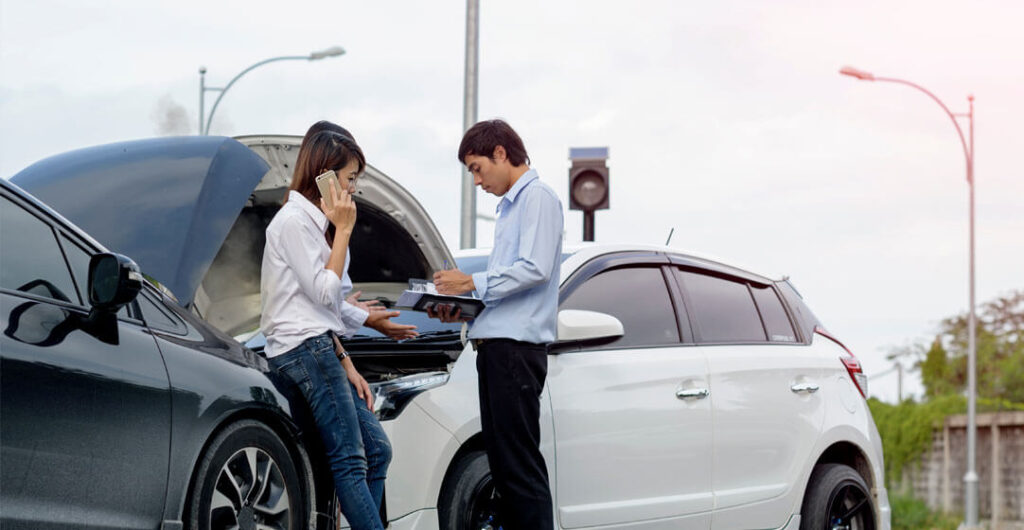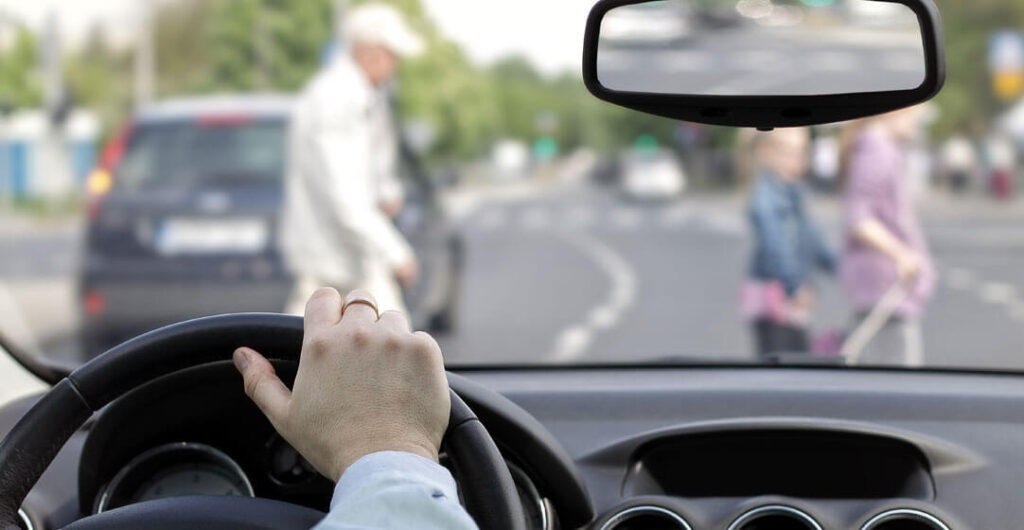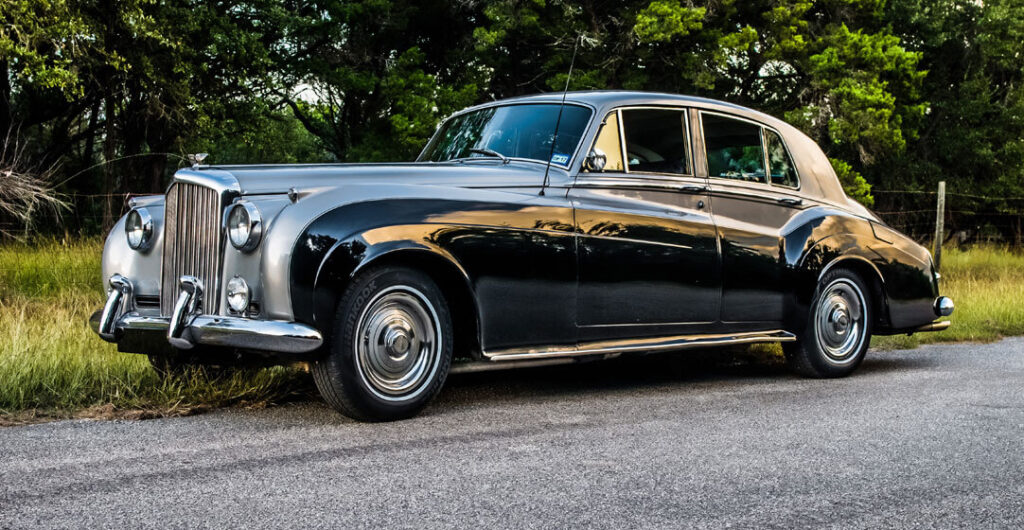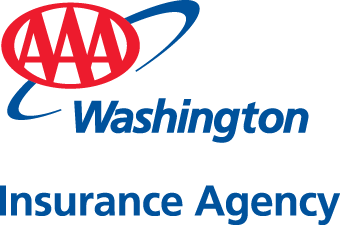Don’t go underinsured for road risks
Car insurance is likely the first type of insurance that you’ll buy. In Washington and Idaho, as well as in most states, you can’t legally drive a car without a minimal level of car insurance.
But while car insurance may be the most popular type of insurance, many drivers are underinsured for the road risks facing them every day, as well as the risks to their passengers and other drivers.
So, it’s worth taking time to compare car insurance and learning what’s available to best protect yourself on the road.

The big three car insurance types
Car insurance, also called auto insurance, has three main components that can be sold together or separately. The first type, liability insurance, protects other drivers and their passengers, and is mandatory in Washington and Idaho. There are also two types of optional insurance that will pay claims to damage done to your car under various scenarios.
The three types of car insurance are:
- Liability insurance will pay claims if you have caused an accident that injures other parties or damages another person’s car or property;
- Collision insurance will cover damage to your car in an accident regardless of who is at fault, including another vehicle, an object (like a guardrail, pole) or a rollover;
- Comprehensive insurance will cover damage to your car in random acts that are out of your control, such as theft, vandalism, certain natural disasters or if you hit a deer or other large animal.
If you’re unsure about which type of car insurance you need, a AAA agent can guide you through all your options and help you to get the right policy.
Tip: When liability, collision and comprehensive are sold together, it is sometimes called “full coverage;” however, that term is misleading. “Full coverage” policies do not include some useful types of insurance, such as “uninsured/underinsured motorist” coverage and umbrella policies. It’s a good idea to review your insurance policy regularly with an insurance agent. Go here to find a AAA agent in your community.

Liability insurance is mandatory
In Washington and Idaho, you must obtain a minimum level of car insurance legally to drive the car. This coverage will provide two types of liability protection:
- Bodily injury liability will pay the insured portion of your expenses if you cause an injury to other people, including pedestrians, passengers in the car or people in other vehicles.
- Property damage liability will cover your insured portion if you cause an accident that damages someone else’s car, a building or some other property.
Fact: In Washington, the minimum liability you must carry on an auto policy is $25,000 for injuries or death to another person; $50,000 for injuries or death to all other people; and $10,000 to cover another person’s property. In Idaho, it is the same (except the property damage level must be $15,000).
Is the minimum level of liability enough?
No, it’s not. Liability coverage is the most important part of an a car insurance policy. Of the three main insurance types (including collision and comprehensive), liability insurance is the one type that can protect you from a catastrophic financial loss.
Unfortunately, serious accidents do happen on the road. If you have caused that accident (however unintentional and accidental), you could be sued and faced with paying a large judgement against you from other injured parties. If you don’t have a robust amount of liability coverage, you will likely exhaust your insured portion and be responsible for paying the rest out-of-pocket.

How much liability coverage do I need?
Really, you can’t have too much liability coverage. Many car insurance companies cap the limit that you can buy at around $300,000 to $500,000 per accident. However, it’s also possible to add an auto policy to an umbrella policy, which can affordably add $1 million or more of liability coverage to home, auto and other policies simultaneously.
Here are some reasons why you should consider adding the maximum level of liability on your car insurance:
- It can protect your home, savings and investments in case you are sued and found liable for injuries to other parties;
- It more closely aligns your interests with those of the insurance company. If you have a robust amount of liability coverage, often the insurance company will represent you in court if you are sued, as they have a greater stake in the outcome. By contrast, if you have a minimal level of liability, the insurance company normally will pay the claim, and you will have to find your own legal representation in any future proceeding.
- You can add your auto policy to an umbrella policy that can increase your liability to $1 million or more (umbrella policies are typically bought in $1 million increments). Normally, you have to purchase the maximum available amount of liability coverage available before you can include your car in an umbrella policy.

Do I need comprehensive and collision?
Unlike liability insurance, comprehensive and collision insurance is optional in Washington and Idaho. However, if you have a car loan, usually you’ll be required to carry both.
In their different ways, comprehensive and collision insurance protect the value of the car.
Tip: Comprehensive and collision insurance will pay for claims, minus the deductible. A deductible is the amount you have agreed to pay. For example, if you have $1,000 deductible, you have to pay that amount to repair any damage before the insurance will begin paying out the rest of the claim. It’s possible to lower or increase the deductible. Policies with low deductibles have higher premiums.
When should I drop comprehensive and collision?
Most cars lose their value almost immediately after driving them off the lot, and this value continues to depreciate over time. If you total the car in an accident, for example, the insurer will reimburse you for the actual cash value of the car, not the amount that you paid years ago. That amount is usually less than what you’ll find on resale guides.
Eventually, the car will drop in value to a point where it no longer makes much sense to carry comprehensive or collision insurance. Often this occurs around the five-year, 100,000-mile threshold. However, some car models hold their value better than others, and there are special cases.

For example, you would typically keep comprehensive and collision insurance longer, if you own:
- A luxury vehicle, like a Bentley, a Mercedes or Rolls-Royce
- A high-priced sportscar, like a Porsche or Aston Martin
- A classic vintage car
Can I keep just one?
Yes, you can drop one of comprehensive or collision insurance, and keep one. But which one should you keep? That depends on whether you want to bet on your driving skills or your luck.
Many people opt to keep comprehensive insurance because it will cover you for many scenarios (such as theft, certain natural disasters, vandalism and animal collisions) that are random, accidental and out of your control. By contrast, collision insurance covers damage to your car if you are involved in an accident with another car, an object or experience a rollover.

Other Useful Coverage to Consider
Aside from liability, comprehensive and collision insurance, you can also beef up your coverage on the road with the following insurance:
- Uninsured/underinsured motorist coverage protects you and your property if you are involved in an accident with an at-fault driver who is uninsured or underinsured. If you are injured, for example, this insurance can be used to pay for your medical expenses and property damage. You may have to cover your own expenses out of pocket if you are injured by an uninsured/underinsured driver who is insolvent, and you don’t have this type of insurance.
- Personal injury protection, or PIP, provides medical care coverage, and adds additional benefits like reimbursing your wages if you miss work due to your injuries. PIP’s treatment coverage also extends to rehabilitative or psychiatric care.
- Medical payments coverage, or MedPay, pays for medical expenses, regardless of who is at fault. It covers injuries sustained if you’re behind the wheel, a passenger in your car, riding in someone else’s vehicle or injured by a car as a pedestrian. Coverage extends to expenses deemed “necessary and reasonable.” That includes doctor visits, hospital stays, surgeries, x-rays, ambulance fees and even funerals.
As you can see, buying car insurance is not as simple as it first seems. There are lots of options, and it is always a good idea to periodically review your coverage with an insurance agent. Call a AAA agent to find the best coverage for you.
—Written by AAA Washington staff
—Top photo: AdobeStock

